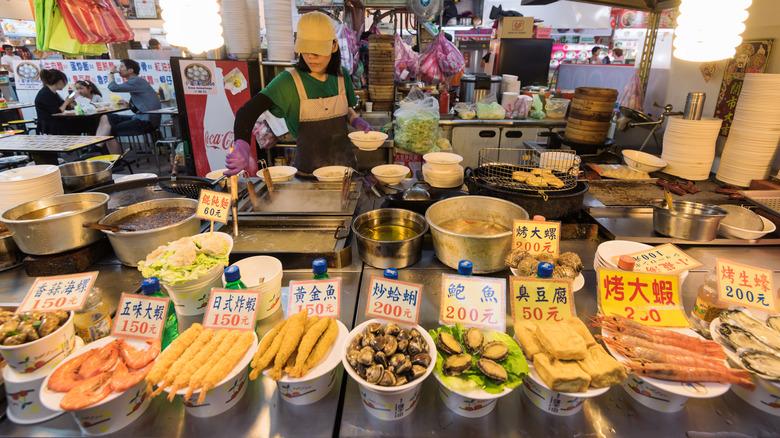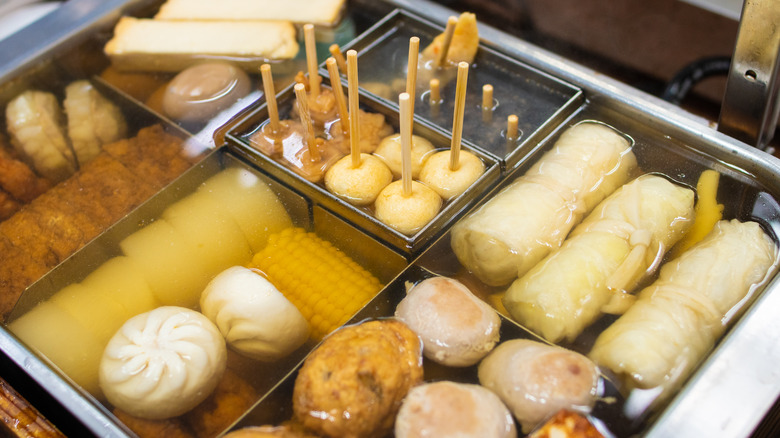What Does 'Q' Mean In Taiwanese Cooking?
Bouncy and elastic may not be words that are top-of-mind in describing a sought-after ingredient or dish, but those words are close to the unique mouthfeel Taiwanese snackers are looking for in foods like fish balls, sweet potato balls, oyster omelets, or the bubble in bubble tea (the island's most popular food export), according to Taiwan Business Topics. And because those adjectives — along with slippery and chewy — don't wholly capture the essence of the mouthfeel that the Taiwanese are looking for, a creative soul came up with the term "Q" to describe all that and more. The word's popularity took off, and it's widely used today.
No one is quite certain who came up with the idea of adapting the seventeenth letter of the alphabet to describe the eating experience or why that letter was chosen. But writers Steven Crook and Katy Hui-wen Hung told Taiwan Business Topics that the letter sounds like the Taiwanese word "k'iu" which describes things that are wonky, wavy, or even bouncy. You can see the connection when Q is used to describe curls after a perm or the way grilled squid curls as it's cooked. Hung also reckons the term hasn't been around for very long either, as the use of Q as a culinary term started to pop up less than two decades ago.
Q is an important mouthfeel
Signs advertising Q or QQ items can be found in night markets all over Taiwan, where most people go for dinner or late-night snacks before they head home, per The New York Times.
Journalist George Liao told Taiwan Business Topics, "In Taiwanese, when we say something is very Q, we mean it tastes good-chewy, which is usually associated with being delicious. Some snacks have to be chewy to be delicious, and when that quality comes out, we usually praise the food by saying it's very Q. Sometimes it also means sticky, as some Chinese or Taiwanese foods need to be sticky to be delicious, such as mochi."
Writers who might have experienced and appreciated Q — or QQ — compare that quality to other food concepts that were originally unique to specific cultures, the way Italians used al dente or "to the tooth" to describe the sought-after texture of good pasta (via The New York Times) or the way Japanese view umami as the fifth flavor, along with sweet, sour, bitter, and salty (via Ajinomoto).
Q is a Taiwanese concept that doesn't discriminate between sweet or savory. But like bubble tea, Q can be found beyond Taiwan's shores because the unique mouthfeel is already found in foods from other cultures — though they're not described the same way. Good quality gummy bears are considered to be Q, as are marshmallows, Korean tteok-bokki, and Japanese mochi.

